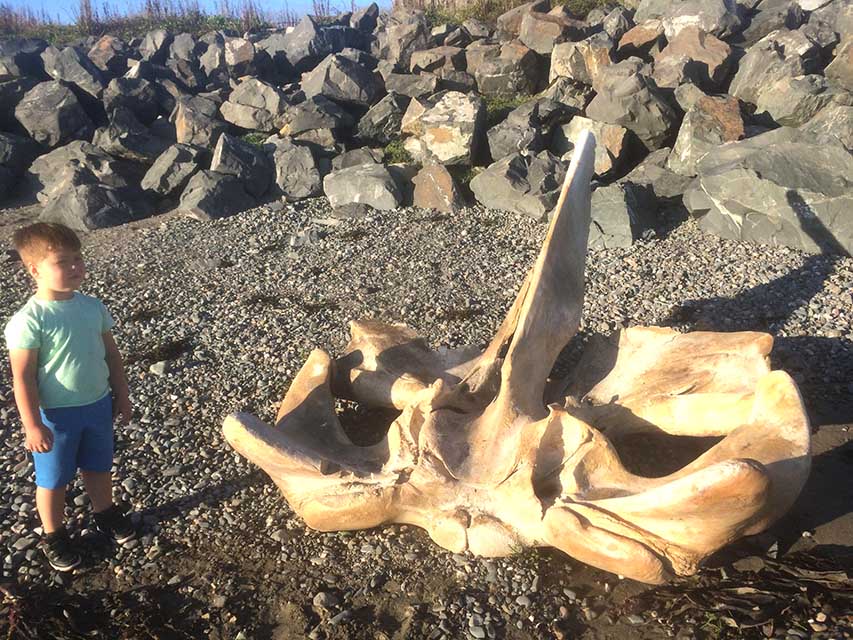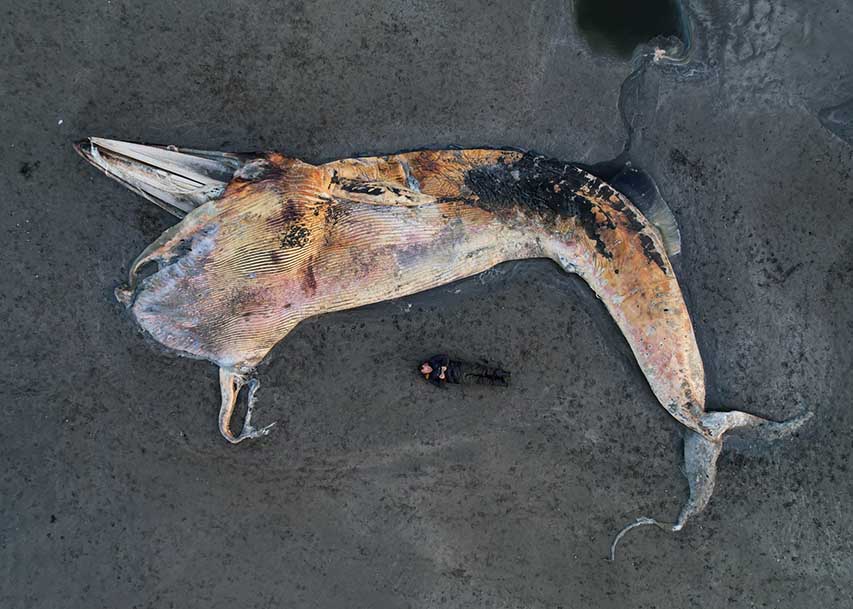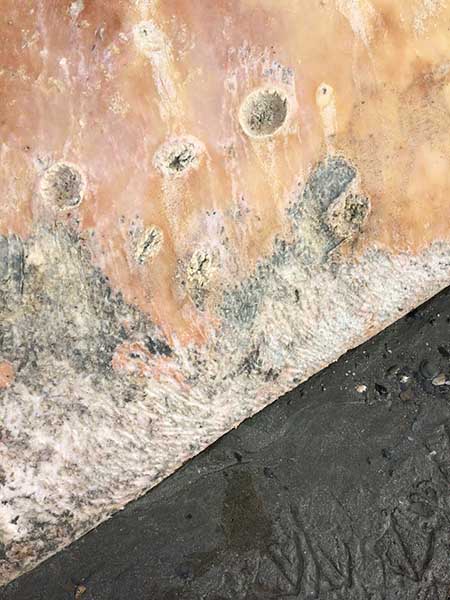Dead Whale Washed Up On Minerstown Beach
Over the past few days, members of the public have visited Minerstown Beach to look at the whale carcase washed up on the shore.
Doris Noe, a keen environmentalist from KIllough, said: “This whale is very large, much larger than a Minke whale. Minkes are the species of whale which typically frequents the County Down coast and are around 10-metres long.
“However, the whale stranded on Monday last week at Minerstown measures almost 15 metres from the tip of the mouth to the base of its tail. Its tail, called the fluke, measures another 2.4 metres. This length means it is either a Fin or a Sei whale.

“These whales belong to a group called toothless whales, or baleen whales. They filter food out of the sea through a curtain like structure in their mouths, known as ‘baleen’.
“Due to having floated dead on the seas for a long time, the Minerstown whale stranded was in an advanced state of decomposition.
“National Museums Northern Ireland have liaised already with Newry Mourne and Down District Council to retrieve the body with a view to exhibit the skeleton and tell its story in due course.
“A multi-agency approach in such a project is certainly required. Involvement and co-ordination of Newry, Mourne and Down District Council, Geological Services NI and National Museums took place all of last week.

“These agencies also rely on the good will and enthusiasm of local residents and volunteers. Being tolerant of a dead whale on your local beach for a week is a big ask.
“Newry Mourne and Down District Council lifted the whale from the beach with a view of continuing the partnership with the National Museums.”
Doris Noe added: “The stranded whale will have eaten around 900kg of plankton, krill and small fish every day. Investigation of a bone which became separated from the body identified it as part of the whale’s hyoid apparatus.

“This is part of the whale’s voicebox, enabling it to suck and also make sounds.
“The dimension of this bone give a strong indication that the animal stranded is a Sei whale.
“This is a globally endangered species. It is a rare whale to visit our waters. It has an estimated world population of just 80,000.
“Once confirmed as a Sei whale with the DNA sample taken by the Centre for Environmental Data and Recording (CEDaR) the stranded whale on Minerstown beach would be the third confirmed record for Northern Ireland and the first for County Down.
“Another interesting observation is the presence of bite marks on its body towards its fluke (tail).
“These bites were afflicted by a specialist shark called the Cookiecutter shark. It is a shark that lives in the Bermuda Triangle!
“The bites will likely not have contributed to the whales death, but would have been experienced as pretty painful.
“All this shows the whale stranded at Minerstown has been moving long distances while still alive, moving between Artic and Antartic and spending time in tropical waters when giving birth to its calf.
“A calf which measures around 4.5 metres on birth, weighing around 700kg.”This would be a big baby to suckle. Whales are incredible mammals that have returned from land to sea during the course of a long evolution.
“St. Columba called the sea between Donegal and the West of Scotland the ‘Sancturary of Whales’.
“Hopefully, renewed efforts will be made to save more of the smaller Minke whales from being entangled in lobster pot ropes which tragically leads to a death by drowning.
“This is an almost annual occurence on the South Down coast.”

























